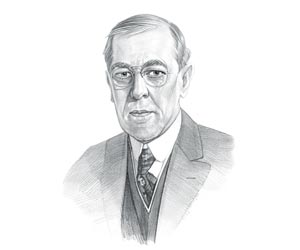|
|
|
|
|
One fifth of the world's population, 500 million people, were attacked by the deadly virus and the Spanish flu afflicted over 25% of the U.S. population and 675,000 Americans died during the pandemic. The Spanish Flu Pandemic lasted for just over one year and ended in the summer of 1919.
1918 Spanish Flu Pandemic Facts: Fast Fact Sheet for
kids When did the Spanish flu start and end? The 1918 Spanish Flu Pandemic started in March 1918 and ended just over a year later in the summer of 1919. What was the cause the Spanish flu? The cause of the 1918 Spanish Flu Pandemic was unknown at the time, many believed it was caused by the use of chemical warfare and poison gas together with the filth of the lice and rat infested trenches. We now know it developed in animals and birds then spread to people. Where did the Spanish flu start? The place of origin is still unknown. Theories are that the virus originated in the lice and rat infected WW1 trenches in France. Why was the Spanish flu so deadly? The 1918 Spanish Flu Pandemic was so deadly because there was no known cure at the time to the disease that spread so quickly and relentlessly. How did the Spanish flu get its name? The Spanish Flu got its name because Spain was one of the first countries to be reported as being hit by the disease. (Wartime censorship rules allowed for reporting on the spread and impact of the disease in neutral Spain) What was the Spanish flu mortality rate? The mortality rate among the infected was estimated at nearly 10% - 500 million people, were attacked by the deadly virus and 50 million people died of the disease.
1918 Spanish Flu Symptoms
1918 Spanish Flu Cure
Advice for avoiding Spanish Flu
WW1 and the
1918 Spanish Flu Pandemic Facts about
1918 Spanish Flu Pandemic More U.S. soldiers died from the 1918 Influenza than were killed in battle during WW1. 40% of the U.S. Navy was hit with the flu, and 36% of the Army became ill. Deaths from the deadly disease surpassed the Black Death of the Middle Ages. Advice was given on the Prevention of the disease. Poster, like the 'Coughs and Sneezes' poster, were created Prevention advice was as follows:
President Woodrow Wilson reportedly contracted influenza in early 1919 whilst negotiating the Treaty of Versailles The economy suffered as businesses and factories were forced to close due to sickness amongst the workers and farmers became too sick to harvest the crops. Courts and schools were closed. In some states public health officials made it mandatory to wear masks. In large cities such as New York, people who did not cover their mouths when they coughed were given either a fine or they were sent to jail. Hospitals became full to bursting and desperate local doctors and nurses were unable to meet the demand for help. Bribes were offered but even money was refused. The U.S. government established the Volunteer Medical Service to train young doctors to help fight influenza. The Public Health Service dispatched these physicians to areas without any medical facilities or health professionals. Undertakers were not able to keep up with he demand for burials and coffins, bodies lined the streets. Many families had to dig graves for their relatives. People between the ages of 20-40 were particularly susceptible to the disease and accounted for nearly 50% of the fatalities. There were three waves of the pandemic influenza. The first wave appeared in the spring of 1918, quickly followed by much more fatal second and third waves in the fall and winter of 1918–1919, Doctors attempted to boost the immune system of patients and tried numerous treatments in a desperate effort to treat and find a cure for the disease. People were injected with typhoid vaccine, hydrogen peroxide and mercuric chloride. Aspirin, and codeine were the most common treatments. Epsom salt salts and Castor oil were also recommended. Arsenic, quinine and heroin were also prescribed in a vain effort to ease pain and reduce fatalities. A number of causes were attributed to the rapid spread of the disease during WW1. The crowded conditions on troop ships, the deployment of troops in unsanitary trenches, troops weakened physical conditions due to poor diet and exhaustion and exposure to poison gases. Thirty of the 50 largest US cities suffered from an "excess mortality" from the influenza Flu orders were passed to help quarantine the disease. Some towns required special paperwork to pass through them Since the 1918 pandemic, there have been several other influenza pandemics, although none as deadly as the 1918 strain.
Are there modern antiviral treatments and vaccines effective against the 1918 virus? Two types of antiviral drugs, rimantadine (Flumadine) and oseltamivir (Tamiflu), have been shown to be effective against influenza viruses similar to the 1918 virus such as Swine Flu and Bird Flu. |
| US American History |
| 1913-1928: WW1 & Prohibition |
| America in World War 1 |
|
|
|
|
|
First Published2016-04-19 | |||
|
Updated 2018-01-01 |
Publisher
Siteseen Limited
| ||
|
|

